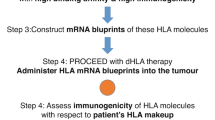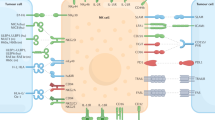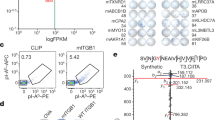Abstract
KALISS was able to show that the enhancement of tumour grafts in allogeneic recipients is mediated by antibody1. Three alternative mechanisms by which antibodies might exert their effect have been postulated by Billingham et al.2: (1) an afferent inhibition in which antibody combined with allogeneic cells prevents antigeneic determinants from reaching immunologically competent cells; (2) a central inhibition in which antibody, by direct action on lymphoid cells, prevents their sensitization; (3) an efferent inhibition in which antibody reacting with target cells protects against the cytotoxic action of immune lymphoid cells which are competing for the same antigenic receptors. Both the afferent and the central mechanisms would affect sensitization of lymphoid cells, thought to be the most important mediators of homograft rejection. Brent and Medawar3 demonstrated that extracts of antigenic tissue injected into recipients treated with antiserum did not provide immunization against a subsequent skin graft. Snell et al.4 showed that lymphoid cells from tumour allograft recipients which had been treated with antiserum were less efficient in inhibiting tumour growth than lymphoid cells from untreated recipients. Passive immunization is also known, however, to inhibit the synthesis of antibodies4–6, and experiments involving transfer of immunologically competent cells cannot critically distinguish between cellular and humoral immunity. We have therefore analysed the effect of passive immunization on “cell bound immunity” using in vitro methods.
This is a preview of subscription content, access via your institution
Access options
Subscribe to this journal
Receive 51 print issues and online access
$199.00 per year
only $3.90 per issue
Buy this article
- Purchase on Springer Link
- Instant access to full article PDF
Prices may be subject to local taxes which are calculated during checkout
Similar content being viewed by others
References
Kaliss, N., Cancer Res., 18, 992 (1958).
Billingham, R. E., Brent, L., and Medawar, P. B., Transpl. Bull., 3, 84 (1956).
Brent, L., and Medawar, P. B., Proc. Roy. Soc., B, 155, 392 (1962).
Snell, G. D., Winn, H. J., Stimpfling, J. H., and Parker, S. J., J. Exp. Med., 112, 293 (1960).
Müller, G., J. Nat. Cancer Inst., 30, 1153 (1963).
Rowley, D. A., and Fitch, F. W., J. Exp. Med., 120, 987 (1964).
Brunner, K. T., Mauel, J., and Schindler, R., Immunology, 11, 499 (1966).
Müller, G., Transplantation, 2, 405 (1964).
Müller, E., J. Exp. Med., 122, 11 (1965).
Brondz, B. D., Transplantation, 3, 356 (1965).
Author information
Authors and Affiliations
Rights and permissions
About this article
Cite this article
BRUNNER, K., MAUEL, J. & SCHINDLER, R. Inhibitory Effect of Isoantibody on in vivo Sensitization and on the in vitroCytotoxic Action of Immune Lymphocytes. Nature 213, 1246–1247 (1967). https://doi.org/10.1038/2131246a0
Issue Date:
DOI: https://doi.org/10.1038/2131246a0
This article is cited by
-
Effect of normal mouse sera and alloantibodies against lymphocytes and target cells on cytotoxic activity of immune lymphocytes
Bulletin of Experimental Biology and Medicine (1971)
Comments
By submitting a comment you agree to abide by our Terms and Community Guidelines. If you find something abusive or that does not comply with our terms or guidelines please flag it as inappropriate.



